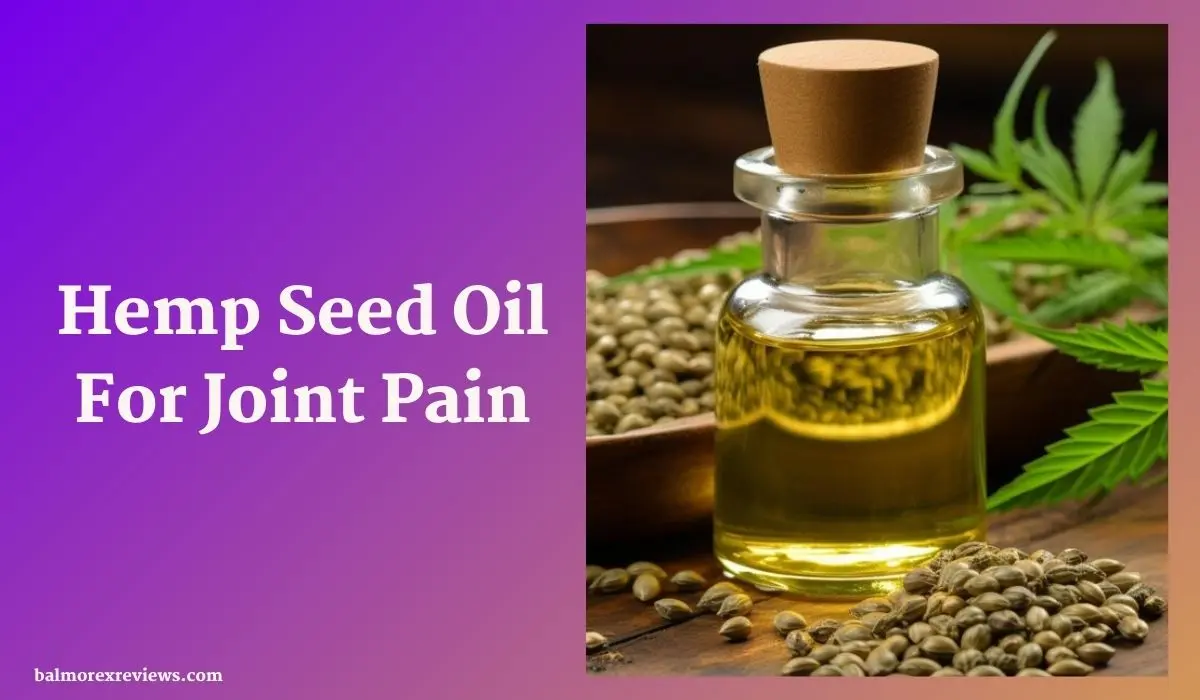How To Use Hemp Seed Oil For Joint Pain Relief? Effective Tips!
Explore the benefits of hemp seed oil for joint pain relief in our comprehensive guide. Learn how to harness the power of hemp seed oil for alleviating discomfort and promoting joint health. Whether applied topically or ingested, discover effective methods for incorporating hemp seed oil into your wellness routine. With its anti-inflammatory properties and omega-3 fatty acids, hemp seed oil offers natural relief for joint pain and supports overall mobility. Say goodbye to discomfort and discover the potential of hemp seed oil as a holistic solution for managing joint pain and enhancing your quality of life.

Disclaimer: This article has been generated with the assistance of AI tools. While our research team has fact-checked the content, readers should independently verify information for accuracy and reliability.
Do you suffer from joint pain that makes it hard to move around and do daily activities? If so, you’re not alone. Joint pain can be caused by many things like arthritis, injuries, or just getting older. While there are many traditional treatments, more and more people are turning to natural remedies like hemp seed oil for relief. In this article, we’ll explore how to use hemp seed oil for joint pain and share some helpful tips.
What Is Hemp Seed Oil?

First, let’s talk about what hemp seed oil is. Hemp seed oil is made from the seeds of the hemp plant, which is a type of cannabis plant. But unlike marijuana, hemp contains only very small amounts of THC (the substance that gets you “high”). Instead, hemp seed oil is packed with good things like omega-3 and omega-6 fatty acids, antioxidants, and anti-inflammatory compounds.
How Does Hemp Seed Oil Help With Joint Pain?
Hemp seed oil has been praised for its ability to help with joint pain because of its anti-inflammatory properties. Inflammation is a big reason why joints hurt, and the compounds in hemp seed oil can help reduce this inflammation, giving you relief. The omega-3 and omega-6 fatty acids in hemp seed oil may also help lubricate your joints, making them move more easily and reducing stiffness.
Effective Tips For Using Hemp Seed Oil For Joint Pain
Now that you understand how hemp seed oil can help with joint pain, let’s look at some effective tips for using it:
1. Topical Application
One of the most common ways to use hemp seed oil for joint pain is to apply it directly to the affected area. You can gently massage the oil onto your joints, allowing it to soak into your skin. This method works well for joint pain in a specific area.
To apply hemp seed oil topically, follow these steps:
a. Start with a small amount of pure, cold-pressed hemp seed oil.
b. Warm the oil slightly between your hands to make it easier to apply.
c. Gently massage the oil into the joint that hurts, using circular motions.
d. Cover the area with a warm towel or compress to help the oil soak in deeper.
e. Repeat this 1-2 times per day, as needed.
2. Oral Consumption
In addition to applying it to your skin, you can also take hemp seed oil by mouth to help reduce joint pain and inflammation from the inside out. This may work better for widespread joint pain or conditions like rheumatoid arthritis.
To consume hemp seed oil orally, you can:
a. Take 1-2 tablespoons of hemp seed oil daily, either by itself or mixed into your favorite drinks or foods.
b. Consider taking it with a meal to help your body absorb it better.
c. Start with a smaller amount and gradually increase as you get used to it.
3. Combine With Other Natural Remedies
Hemp seed oil can be even more effective when combined with other natural remedies for joint pain relief. For example, you could try:
a. Adding a few drops of anti-inflammatory essential oils like eucalyptus, peppermint, or lavender to the hemp seed oil before applying it to your skin.
b. Eating more turmeric, a spice that has powerful anti-inflammatory properties, or taking it as a supplement along with hemp seed oil.
c. Doing gentle exercises like yoga or tai chi to improve flexibility and reduce stress on your joints.
4. Consistency Is Key
When using hemp seed oil for joint pain, it’s important to be consistent. It may take some time for the anti-inflammatory and pain-relieving effects to fully kick in. Be patient and stick to a regular routine of applying or taking hemp seed oil for the best results.
5. Precautions And Considerations
While hemp seed oil is generally safe for most people, there are a few things to keep in mind:
a. Do a small patch test before applying hemp seed oil to your skin to make sure you don’t have an allergic reaction.
b. Talk to your doctor, especially if you have any existing medical conditions or are taking medications.
c. Use hemp seed oil in moderation, as consuming too much can lead to side effects like digestive issues or weight gain.
6. Combine With A Balanced Lifestyle
While hemp seed oil can be a helpful natural remedy for joint pain, it’s important to remember that it should be part of a well-rounded, balanced lifestyle. Maintaining a healthy weight, exercising in a way that doesn’t strain your joints, and managing stress can all help reduce the strain on your joints and improve your overall well-being.
Final Note
Hemp seed oil is a versatile and natural option for those looking for relief from joint pain. Whether you choose to apply it to your skin, take it by mouth, or combine it with other natural remedies, the anti-inflammatory and pain-relieving properties of hemp seed oil may help ease your discomfort and improve your mobility. Remember to start slowly, be consistent, and talk to your doctor if you have any concerns. With the right approach, hemp seed oil could be a valuable addition to your joint pain management routine.
Natalie Smith
Natalie Smith is a highly respected Osteopath with over 15 years of experience in treating a wide range of musculoskeletal conditions. She graduated from the British School of Osteopathy with a Master’s degree in Osteopathic Medicine and is a registered member of the General Osteopathic Council. Natalie’s expertise spans the diagnosis and treatment of issues affecting the muscles, bones, joints, and connective tissues. She utilizes a holistic, patient-centered approach, combining manual techniques such as spinal manipulation, soft tissue massage, and joint mobilization to alleviate pain and restore optimal function. Passionate about educating her patients, Natalie frequently speaks at local health workshops and has authored articles on osteopathic care for several respected medical journals. Her commitment to ongoing professional development ensures she remains at the forefront of the latest advancements in the field of osteopathy.
